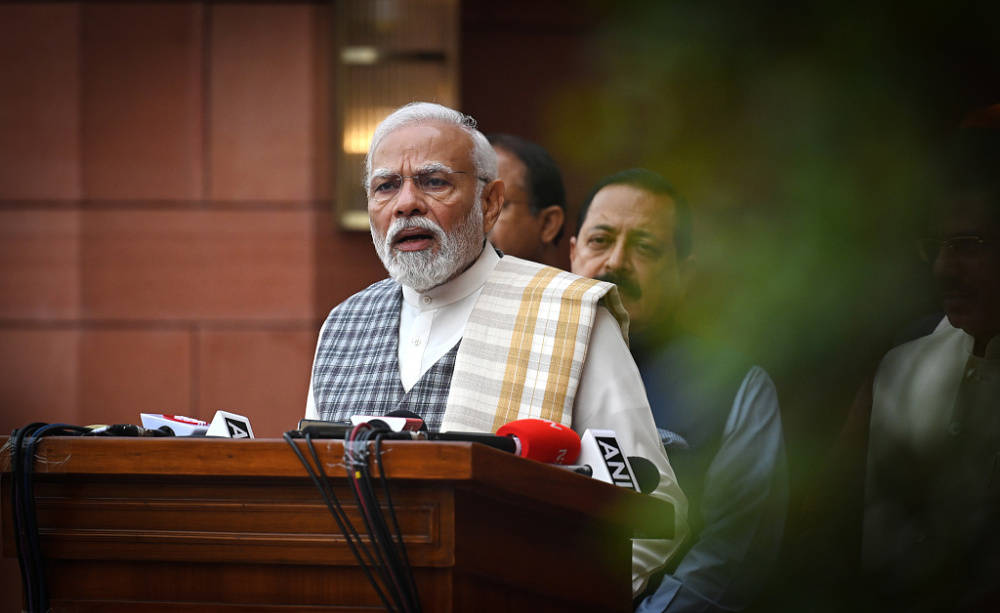
On December 5th, the market value of the Indian stock market broke through the $4 trillion mark for the first time. The data shows that in less than three years, the market value of Indian exchange listed companies has increased by $1 trillion. The major benchmark stock index in India, which has reached a historic high, has risen by over 13% this year and is expected to rise for an unprecedented eighth consecutive year.
In the twenty years from 2003 to now, Indian stocks have surged nearly 20 times. Especially since the beginning of this year, overseas funds have injected over $14 billion into the Indian stock market. Driven by continuous inflows from Indian retail investors, local institutions including mutual funds and insurance companies have seen their stock purchases climb to over $16.5 billion.
Moreover, according to data released by the Indian Bureau of Statistics on November 30th, driven by the sustained prosperity of the manufacturing industry, India achieved an economic growth rate of 7.6% in the second quarter of the 2023-2024 fiscal year, which is higher than external expectations and also higher than the Reserve Bank of India's forecast of 6.5%.
It is reported that before the release of GDP data, the Monetary Policy Committee of the Bank of India held a meeting in October. Due to persistent inflation concerns, the meeting has kept the benchmark interest rate unchanged at 6.5% for the fourth consecutive time.
It can be said that India's much better than expected GDP growth is driven by manufacturing. The manufacturing industry grew by 13.9% in the second quarter, compared to 4.7% in the previous quarter. Behind the rapid growth of the manufacturing industry is the Indian government's increased capital investment expenditure.
On August 15th, Indian Prime Minister Modi, wearing a multi-color headscarf, delivered a speech to the country on Independence Day in the capital city of Delhi's Red Fort, promising that India's economy would rank among the top three in the world within five years. Modi also claimed that his government has lifted over 130 million people out of poverty, and the increasingly prosperous India is an opportunity for the world.
Not only that, on November 25th, Modi transformed into a pilot, dressed in pilot attire, and sat in the cockpit. The fighter jet took off, and Modi's smile bloomed. He repeatedly waved and thumbed up at the fighter jet captured by Companion Flying, and really flew into the sky. It can be said that for Modi, who is already 73 years old, it is really too hard.
Indeed, in areas such as taxation, finance, digital economy, smart cities, entrepreneurship policies, and public health, Modi is striving to push India towards a modern country. As the fastest-growing major economy in the world, Modi has played an indispensable role in India's ability to stand out as a dark horse amidst the global slowdown this year.
So, what the public is concerned about is, under such impressive data, is India's economy really on a smooth path?
According to data from the Indian Economic Monitoring Center, India's unemployment rate has increased in the past year, and inflation has remained high, especially in infrastructure construction, where there is still significant room for improvement.
Moreover, in terms of GDP growth alone, in the opinion of India's own public opinion, it is not entirely optimistic. On December 2nd, the Indian Express reported that although GDP growth exceeded expectations driven by strong manufacturing, there has been a significant decline in agriculture and services.
India's Mint reported that government spending increased by 12%, while private consumption growth unexpectedly slowed from 6% year-on-year to 3.1%. According to Indian online media "Wired", a decline in manufacturing activity, a slowdown in the service industry, rising unemployment rates, and air pollution may pose challenges to India's expected economic growth in 2024.
Meanwhile, in terms of labor employment in India, it has not increased with the growth of the working age population. According to media reports, the labor force in India has basically stagnated at just over 400 million in the past five years, and the quality of employment is very low. This has largely constrained the growth rate and momentum of India's economic development.

Since 2025, the conflict between the United States and Europe over the governance of the digital economy has continued to escalate.
Since 2025, the conflict between the United States and Euro…
When German Chancellor Mertz officially announced that he w…
On December 3rd local time, the copper price on the London …
The European Commission announced a new economic security s…
The European Commission announced a new economic security s…
For nearly a year, US President Donald Trump has launched a…